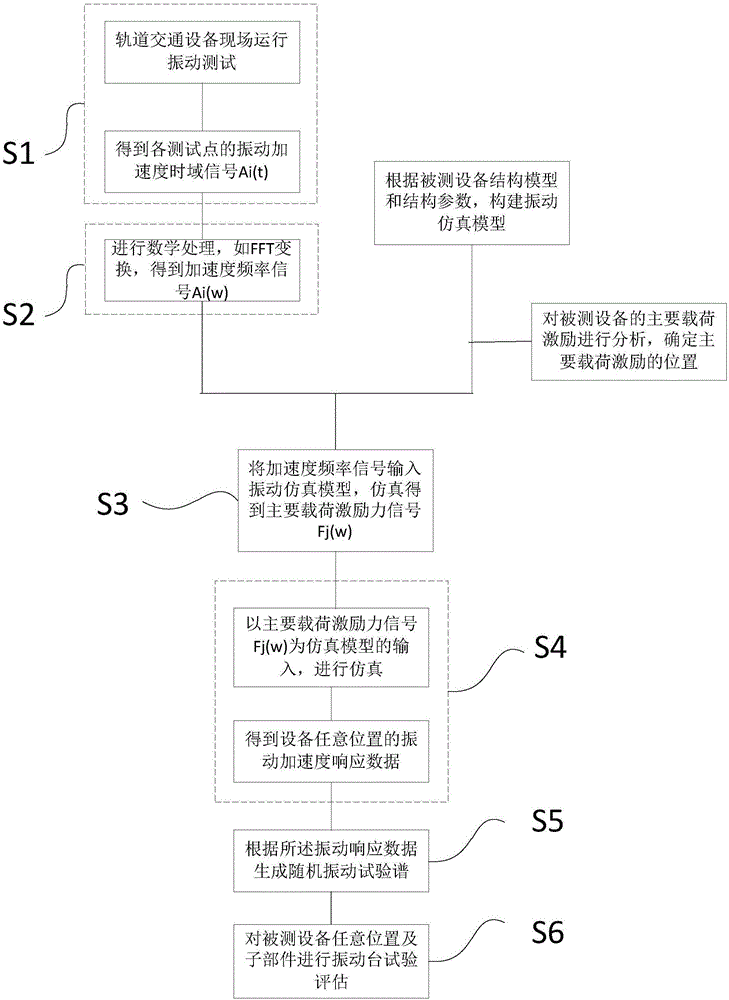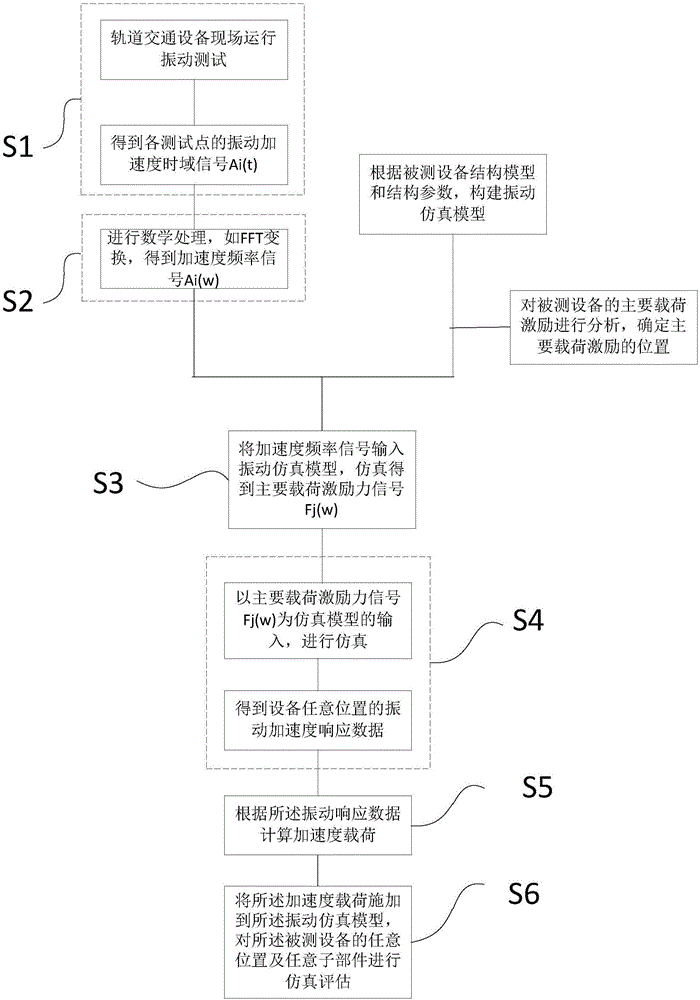Field vibration load identification-based evaluation method and system
A vibration load and on-site technology, which is applied to measuring devices, instruments, and measuring ultrasonic/sonic/infrasonic waves, etc., can solve the problems of cumbersome testing process, easy interference of result accuracy, failure to obtain vibration spectrum, etc., and achieve low testing risk , easy operation and high precision
- Summary
- Abstract
- Description
- Claims
- Application Information
AI Technical Summary
Problems solved by technology
Method used
Image
Examples
Embodiment 1
[0061] Such as figure 1 As shown, the evaluation method based on on-site vibration load identification of this embodiment includes: S1. Obtaining the vibration acceleration time-domain data of the equipment under test in actual operation through the method of on-site testing; S2. The vibration acceleration time-domain data Perform mathematical processing to calculate the vibration acceleration frequency data; S3. According to the pre-designed vibration simulation model of the device under test and the predetermined main load excitation force position of the device under test, input the acceleration frequency data into the The vibration simulation model is used to calculate the main load excitation force of the device under test; S4. Mathematically process the main load excitation force to obtain the main excitation force load of the device under test.
[0062] In this embodiment, the specific steps of step S1 include: arranging sensors at pre-selected measuring point positions...
Embodiment 2
[0070] Such as figure 2 As shown, the steps S1, S2 and S3 of the evaluation method based on on-site vibration load identification in this embodiment are the same as the steps S1, S2 and S3 in the first embodiment, except for steps S4, S5 and S6. In this embodiment, S4. Input the excitation force of the main load into the vibration simulation model, and calculate the vibration response data of any position and sub-components of the device under test through simulation. S5. Generate a random vibration test spectrum according to the vibration response data; S6. Perform a shaking table test evaluation on any position and sub-components of the device under test according to the random vibration test spectrum.
[0071] In this embodiment, the main load excitation force F obtained in step S3 is j (ω),j=1,2,...,N are input to the vibration simulation model, and the vibration response data of any position of the device under test and any sub-component can be determined through simula...
Embodiment 3
[0074] Such as image 3 As shown, steps S1, S2, S3 and S4 of the assessment method based on on-site vibration load identification in this embodiment are the same as steps S1, S2, S3 and S4 in the second embodiment, except for steps S5 and S6. In this embodiment, after the step S4, steps S5 and S6 are also included: S5. Calculate the acceleration load according to the vibration response data; S6. Apply the acceleration load to the vibration simulation model, and apply the acceleration load to the vibration simulation model. Any position and any sub-component of the test equipment can be simulated and evaluated. In this embodiment, the method of calculating the acceleration load based on the vibration response data in step S5 is to select a conventional processing method to organize the vibration response data into acceleration loads according to the type of simulation evaluation selected in step S6. The simulation evaluation in step S6 includes static strength simulation evalu...
PUM
 Login to View More
Login to View More Abstract
Description
Claims
Application Information
 Login to View More
Login to View More - R&D
- Intellectual Property
- Life Sciences
- Materials
- Tech Scout
- Unparalleled Data Quality
- Higher Quality Content
- 60% Fewer Hallucinations
Browse by: Latest US Patents, China's latest patents, Technical Efficacy Thesaurus, Application Domain, Technology Topic, Popular Technical Reports.
© 2025 PatSnap. All rights reserved.Legal|Privacy policy|Modern Slavery Act Transparency Statement|Sitemap|About US| Contact US: help@patsnap.com



